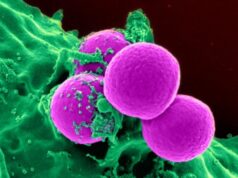The Zika virus is most commonly transmitted in humans as the result of a bite from an infected mosquito or from an infected human to another human. What is not well known is that the virus also can be transmitted via the environment if an individual is pricked with an infected needle or has an open cut and comes in contact with the live virus. While there are no known cases to date of the general public being infected with the Zika virus through the environment, there has been at least one documented case of laboratory acquired Zika virus infection.
Research being presented today at the 2016 American Association of Pharmaceutical Scientist (AAPS) Annual Meeting and Exposition, which is taking place Nov. 13 -17 in Denver, found that under certain conditions, the Zika virus can live for several hours on hard non-porous surfaces and still be highly contagious, but that some commonly used disinfectants are extremely effective in killing the virus. The research may have important infection control implications for both consumers and those who work in healthcare or lab settings.
The study looked at isopropyl alcohol, diluted bleach, quaternary ammonium/alcohol, peracetic acid, and pH 4 or pH 10 solutions, which are commonly used in clinical, laboratory and industrial settings.
Findings showed that when the virus was in an environment without blood, these methods of inactivating Zika, except pH 4 and pH 10, were largely effective, but in environments where virus was associated with blood, the results were dramatically different.
“Zika can survive on hard, non-porous surfaces for as long as eight hours, possibly longer when the environment contains blood, which is more likely to occur in the real world,” said the study’s lead researcher S. Steve Zhou, Ph.D. “The good news is that we found that disinfectants such as isopropyl alcohol and quaternary ammonium/alcohol are generally effective in killing the virus in this type of environment and can do so in a little as 15 seconds.”
Zhou, who is the director of virology and molecular biology for Microbac Laboratories, headquartered in Pittsburgh, Penn., said the study did not yet look at the survivability of Zika on hard non-porous surfaces beyond eight hours.
Find your dream job in the space industry. Check our Space Job Board »
Microbac’s research also found that bleach and peracetic acid were not as effective in killing Zika virus when the virus is associated with blood.
“The data were important to know especially for healthcare providers and researchers,” said Zhou. “One must bear the organic load of the environment such as blood, in mind, before reaching a conclusion about the Zika virus inactivation efficacy by a particular product.”
The next stage of the research will be to take a more in-depth look at how long Zika survives on hard non-porous surfaces in the heat and how best to inactivate the virus.










